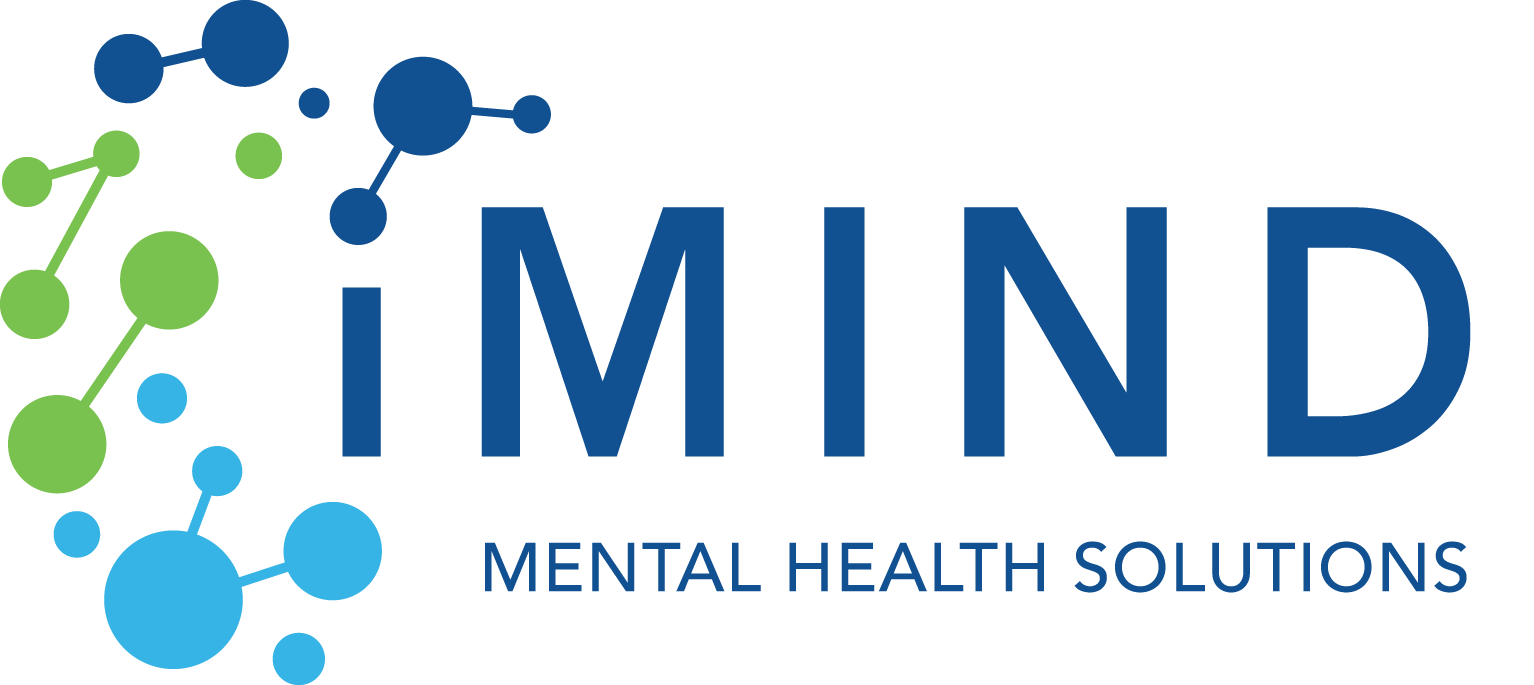The Beauty of Resilience: How to Cultivate Mental Strength in Challenging Times
Published By Justin Baksh, LMHC, MCAP
November 16, 2023

Constant change, uncertainty, and unforeseen challenges… the concept of resilience has taken on a newfound importance today. No longer just a buzzword, resilience is a crucial psychological skill that empowers individuals to adapt, persevere, and ultimately thrive, despite adversity. Whether it’s the global implications of a pandemic, personal struggles with mental health, or the complexities of modern life, building resilience acts as a buffer, helping us navigate challenges with grace and fortitude.
What is Resilience?
“Norman Garmezy, a developmental psychologist and clinician at the University of Minnesota, met thousands of children in his four decades of research. But one boy in particular stuck with him.
He was nine years old, with an alcoholic mother and an absent father. Each day, he would arrive at school with the exact same sandwich: two slices of bread with nothing in between. At home, there was no other food available, and no one to make any.
Even so, Garmezy would later recall, the boy wanted to make sure that ‘no one would feel pity for him and no one would know the ineptitude of his mother.’ Each day, without fail, he would walk in with a smile on his face and a “bread sandwich” tucked into his bag.
The boy with the bread sandwich was part of a special group of children. He belonged to a cohort of kids—the first of many—whom Garmezy would go on to identify as succeeding, even excelling, despite incredibly difficult circumstances. These were the children who exhibited a trait Garmezy would later identify as resilience.”
–Maria Konnikova, How People Learn to Become Resilient, The New Yorker
Resilience is generally understood as the ability to recover from or adapt well to adversity, stress, or significant sources of trauma. It is the psychological fortitude that enables us to bounce back from difficult experiences and to continue functioning, without long-term negative consequences.
However, resilience is more than just an innate ability to overcome obstacles. It’s also a dynamic process that involves a combination of personal characteristics, coping strategies, and social supports.
While many envision resilience as a steadfast stoicism or a rugged grit, it is important to understand that this quality is more nuanced and dynamic. It is not just the ability to “bounce back,” but also the capacity to grow and find meaning in the face of difficulties. Resilience is not solely about recovering from hardships; it is equally about personal growth and deriving significance from adversity.
In psychological terms, resilience incorporates various elements like mental toughness, emotional regulation, problem-solving skills, and the capacity for positive thinking. Resilience is an active process that allows individuals to navigate challenges, derive meaning from them, and use these experiences to inform and enrich their lives.
Real-World Examples of Resilience: How It Manifests in Everyday Lives

Recovering from Job Loss
Losing a job can be a jarring experience that sends shockwaves through your financial stability and self-esteem. Resilience in this situation might involve multiple facets. Initially, it could be the emotional regulation to contain panic and the mental agility to reframe the situation: instead of seeing it as a failure, considering it as an opportunity for a fresh start. Over time, resilience enables you to take practical steps, such as revising your resume, acquiring new skills, or even pivoting to a new career. All these aspects come together to not just help you recover from your lost employment but possibly lead you into a job that is a better fit for your life and ambitions.

Overcoming Personal Trauma
Personal traumas like the loss of a loved one, going through a divorce, or surviving an accident can be emotionally devastating. Resilience in this context often means allowing oneself to grieve while also seeking support, whether from friends, family, or mental health professionals. Over time, it’s the capacity to integrate this trauma into your life story, to draw lessons from it, and to find ways to honor what or who has been lost. Instead of being a dark chapter that’s skipped over, resilience turns trauma into a crucial part of your narrative, helping you to grow emotionally and psychologically.

Persisting through a Health Crisis
A health crisis like a severe illness or a chronic condition can dramatically alter the course of one’s life. Resilience here would involve initially processing the emotional shock and then transitioning into a mindset geared towards recovery or management of the condition. It could mean adhering strictly to treatment regimens, adapting one’s lifestyle, and seeking out communities or support groups. In a broader scope, resilience helps you redefine what a fulfilling life means within the new normal, possibly leading you to explore avenues or perspectives you’d never considered before.
Emotional Responses to Adversity: The Neurological Connections
“Our results complement earlier brain-based research suggesting that resilient people have greater neural connectivity between parts of their prefrontal cortex and emotional brain regions; that they display lower hippocampal activation in response to emotional facial expressions; and that their amygdalae habituate more efficiently to stress.”
–Laura Morena-Lopez, What the Distinctive Brains of Resilient People Can Teach Us, Psyche.com
When we encounter adversity, our emotional responses can range widely, from fear and sadness to frustration and even anger. While these emotions might seem to add more complexity to already difficult situations, understanding their neurological underpinnings can offer a deeper comprehension of our reactions and point the way toward more effective coping strategies.

Fear: The Amygdala’s Favorite Emotion
Fear often has a direct line to the amygdala, a small, almond-shaped cluster of neurons located deep within the brain. Think of it as your emotional alarm system. When we face a threatening situation, the amygdala triggers the release of stress hormones like cortisol and adrenaline. These hormones prepare us for quick action but can also heighten feelings of fear. It’s your brain’s way of saying, “This is serious, pay attention.”
Sadness: More Than Just a Mood
Sadness, often experienced during adversity, has a slightly different neurological route. The prefrontal cortex, the brain’s executive center, communicates with the amygdala to modulate emotional responses. When we experience sadness, neurotransmitters like serotonin can dip, affecting our mood and often causing a feeling of lethargy or withdrawal. This isn’t merely an emotional reaction but a whole-body response that can influence behavior and thought patterns.
Frustration: The Challenge of Blocked Goals
Frustration often arises when we’re thwarted in our efforts to achieve a goal. Neurologically, frustration engages areas of the brain associated with reward and pleasure, such as the ventromedial prefrontal cortex. When we’re frustrated, the ‘reward pathways’ in our brain are not activated, leading to a sensation of dissatisfaction or irritation.
The Interconnected Web of Emotions and Neurology
It’s worth noting that these emotional responses are not isolated events; they interact with each other and with various neurological pathways. For example, prolonged fear can contribute to sadness by affecting serotonin levels, and sustained frustration can eventually trigger the amygdala, increasing your stress response.

The Long-Term Effects of Constant Adversity: Anxiety and Depression
Adversity is a natural part of the human experience, but when it becomes chronic or overwhelming, it can have a lasting impact on mental health. Prolonged exposure to stressful situations can set the stage for conditions like anxiety and depression. Understanding the mechanisms behind this transformation is essential for both prevention and treatment.
The Snowball Effect: How Chronic Stress Builds
When faced with constant adversity, stress hormones like cortisol are continually released. While this hormone serves essential functions in acute stress situations, its prolonged presence can disrupt various bodily systems, including immune function, digestion, and even mental health. Chronic cortisol exposure can keep the brain’s stress response system—the amygdala and related pathways—in a state of heightened alertness. This heightened state can become the ‘new normal,’ predisposing individuals to anxiety disorders.
From Constant Alert to Anxiety
The sustained activity in stress response systems can lead to generalized anxiety disorder (GAD) and other anxiety-related conditions. With the amygdala continually signaling danger, the body stays in a fight-or-flight mode, making relaxation and emotional regulation difficult. Symptoms like constant worry, restlessness, and sleep problems may manifest, creating a vicious cycle where anxiety perpetuates more stress and vice versa.
Depression: When Resilience Resources Are Depleted
The sustained stress can also affect neurotransmitters like serotonin and dopamine, which are crucial for mood regulation. Over time, as these neurotransmitters become imbalanced, the risk for depression increases. Chronic adversity often depletes emotional and psychological resources, making it harder to tap into resilience factors that might help counterbalance these effects. In a way, the brain’s ability to find meaning and joy becomes compromised, leading to depressive symptoms like persistent sadness, lack of motivation, and withdrawal from activities and relationships.
Building Resilience: The 6 Pillars
As we navigate the complexities of life, building resilience becomes not just an asset but a necessity. So, beyond being born with a brain that supports resilience, what can we do? Turns out, there is plenty we can do to build resilience over time. There are various strategies that empower you to build mental strength. Each method has its own merits and can be used in combination for a more holistic approach to resilience.
The 6 Pillars of Resilience
- Mindfulness: Practicing mindfulness enables you to remain grounded, attuned to your immediate surroundings and actions, while resisting the urge to become excessively reactive to external events. Methods such as deep breathing and meditation have the effect of soothing the amygdala, leading to a decrease in cortisol and a subsequent reduction in stress. By centering yourself in the moment, you enhance your ability to manage negative emotions and think more clearly, thereby building your resilience against future adversities.
- Cognitive Behavioral Therapy (CBT): CBT techniques can be invaluable for building resilience. This approach involves identifying negative thought patterns and actively working to replace them with more constructive beliefs. For example, you can reshape a thought from “I can’t handle this” to “I can cope with this challenge by breaking it down into smaller tasks.” This kind of reframing is vital for cultivating a resilient mindset. It gives you the tools to navigate life’s ups and downs more effectively.
- Community Support: The saying “it takes a village” holds true for resilience-building. A supportive network—be it friends, family, or community organizations—offers emotional sustenance and practical help. In times of adversity, a strong social network can mitigate the detrimental impacts of stress while providing fresh viewpoints on difficult circumstances. Engaging with a community allows you to share coping mechanisms, gain emotional insight, and can even have physiological benefits like lowering cortisol levels.
- Physical Health: Physical well-being is tightly intertwined with emotional resilience. The body’s natural mood lifters – endorphins – are released each time you exercise. Moreover, regular physical activity has been shown to reduce the body’s natural reaction to stress, supporting a more balanced mental state. Sleep, too, plays a crucial role. Adequate restorative sleep can significantly affect your ability to manage stress and maintain a resilient outlook. Lack of sleep can affect cortisol levels and impair cognitive function, making adversity more challenging to handle.
- Self-Compassion: Self-compassion is the often-underestimated pillar of resilience. When faced with setbacks, the kindness you show yourself can be a decisive factor in how well you bounce back. Far from being a sign of weakness or self-indulgence, self-compassion involves acknowledging your own suffering, flaws, and mistakes, and choosing to love yourself regardless. By practicing self-compassion, you build a stronger emotional buffer during times of adversity, making it easier to return to a state of balance and well-being.
- Faith: Faith often serves as a robust foundation for building resilience. It offers a framework for understanding life’s challenges, providing a sense of meaning and purpose that can be incredibly empowering when faced with adversity. The practice of faith or spirituality can encompass community support, prayer, meditation, or various rituals that offer comfort and guidance. Being part of a spiritual community fosters a feeling of unity, which can alleviate feelings of loneliness in times of difficulty. Spiritual practices also often promote mindfulness and contemplation, skills closely aligned with cognitive and emotional resilience. For some, faith provides a transcendent perspective, elevating their focus beyond immediate circumstances to a broader, more eternal view. This paradigm shift can reduce stress and offer emotional relief.
Cultivating resilience is not just a skill but a life-affirming journey. It enriches our experience of both highs and lows. Even in times that test our limits, each of us possesses an untapped wellspring of strength and adaptability.
Through mindfulness practices, cognitive strategies, community support, and even the lesser-discussed but equally crucial realm of self-compassion, we can forge a resilience that endures. And for those moments when the path seems too daunting, professional help is not a sign of weakness, but rather another resource for building resilience.
So, as you navigate the complexities of life, remember that adversity is not something to be avoided but a challenge to be met — a stepping stone on your path to a fuller, more resilient life.
- Graham, L. (2019, September 15). Train Your Brain to Build Resilience. Mindful.
- Konnikova, M. (2016, February 11). How People Learn to Become Resilient. The New Yorker.
- Larosa, A., & Wong, T. P. (2022). The hippocampus in stress susceptibility and resilience: Reviewing molecular and functional markers. Progress in Neuro-Psychopharmacology & Biological Psychiatry, 119, 110601.
- Levone, B. R., Cryan, J. F., & O’Leary, O. F. (2015). Role of adult hippocampal neurogenesis in stress resilience. Neurobiology of Stress, 1, 147–155.
- What the distinctive brains of resilient people can teach us | Psyche Ideas. (n.d.). Psyche. Retrieved November 16, 2023, from Psyche.co






